Discover the defining moments in the early life of John F. Kennedy. From birth to education, explore key events.
John F. Kennedy (JFK) was the 35th U.S. President, serving from 1961 until his assassination in 1963. The youngest person elected president, he led the nation during the Cold War, focusing his foreign policy on relations with the Soviet Union and Cuba. A Democrat, Kennedy previously represented Massachusetts in both the House and Senate.
1901: Theodore Roosevelt Becomes President
In 1901, Theodore Roosevelt became president after the assassination of William McKinley, highlighting that he was younger than Kennedy when he assumed the presidency, albeit through succession, not election.
May 29, 1917: John F. Kennedy's Birth
On May 29, 1917, John Fitzgerald Kennedy, later known as JFK, was born. He would become the 35th president of the United States.
June 19, 1917: Kennedy Baptized
On June 19, 1917, Kennedy was baptized at St. Aidan's Church in Brookline, Massachusetts.
1920: Scarlet Fever Diagnosis
In 1920, three months prior to his third birthday, Kennedy contracted scarlet fever and was admitted to Boston City Hospital.
1922: First Exposure to Politics
In 1922, John F. Kennedy had his first exposure to politics when he toured Boston wards with his grandfather Fitzgerald during his unsuccessful gubernatorial campaign.
September 1927: Family Relocation to New York City
In September 1927, due to an outbreak of polio in Massachusetts and Joe Sr.'s business interests in Wall Street and Hollywood, the Kennedy family relocated from Boston to the Riverdale neighborhood of New York City.
September 1930: Enrolled at Canterbury School
In September 1930, at 13 years old, Kennedy was sent to the Canterbury School in New Milford, Connecticut, for 8th grade.
April 1931: Appendectomy and Withdrawal from Canterbury
In April 1931, Kennedy had an appendectomy, after which he withdrew from Canterbury and recuperated at home.
September 1931: Attendance at Choate
In September 1931, Kennedy began attending Choate, a preparatory boarding school in Wallingford, Connecticut.
June 1934: Hospitalization at Mayo Clinic
In June 1934, Kennedy was admitted to the Mayo Clinic in Minnesota; the ultimate diagnosis was colitis.
June 1935: Graduation from Choate
In June 1935, Kennedy graduated from Choate, finishing 64th of 112 students. He was the business manager of the school yearbook and was voted the "most likely to succeed."
September 1936: Enrollment at Harvard College
In September 1936, Kennedy enrolled at Harvard College, where he wrote for The Harvard Crimson, the campus newspaper, focused on athletics and his social life.
1936: Ranch Hand Work
In 1936, Kennedy spent the spring working as a ranch hand outside Benson, Arizona under Jack Speiden.
July 1938: Work at the American embassy in London
In July 1938, Kennedy sailed overseas with his older brother to work at the American embassy in London, where their father was serving as President Franklin D. Roosevelt's ambassador.
1940: Graduation from Harvard
In 1940, Kennedy graduated cum laude from Harvard with a Bachelor of Arts in government, concentrating on international affairs.
1941: Tour of South America
In early 1941, Kennedy toured South America.
December 1943: Departure from the Pacific front
In December 1943, due to his deteriorating health, Kennedy left the Pacific front.
January 1944: Arrival in San Francisco
In early January 1944, Kennedy arrived in San Francisco after leaving the Pacific front.
August 12, 1944: Death of Joe Kennedy Jr.
On August 12, 1944, Kennedy's older brother, Joe Jr., a Navy pilot, was killed during an air mission and his body was never recovered. Kennedy later assembled a privately published book of remembrances of his brother, titled "As We Remember Joe."
December 1944: Release from Chelsea Naval Hospital
From May to December 1944, Kennedy received treatment at the Chelsea Naval Hospital in Massachusetts for his back injury and was released from active duty in December 1944.
1944: The New Yorker article on PT-109 Rescue
In 1944, John Hersey chronicled the PT-109 rescue in The New Yorker, which built Kennedy's appeal as a leader and provided a strong foundation for his political career.
January 1945: Recovery at Castle Hot Springs
Beginning in January 1945, Kennedy spent three months recovering from his back injury at Castle Hot Springs, a resort and temporary military hospital in Arizona.
1946: Kennedy Joins Emmanuel College Board
From 1946 until he died in 1963, Kennedy served on the advisory board of the Roman Catholic Emmanuel College.
1946: Active in the Boston Council of Boy Scouts
From 1946, Kennedy was active in the Boston Council of Boy Scouts, serving as district vice chairman, member of the executive board, vice-president, and National Council Representative.
September 1947: Addison's Disease Diagnosis
In September 1947, Kennedy was diagnosed with Addison's disease by Sir Daniel Davis at The London Clinic.
1952: Stevenson's Presidential Nomination
In 1952, Adlai Stevenson II was a presidential nominee, remaining very popular at the time of the 1960 convention where Kennedy sought the nomination.
September 12, 1953: Wedding of John and Jackie Kennedy
On September 12, 1953, John F. Kennedy married Jacqueline Lee "Jackie" Bouvier at St. Mary's Church in Newport, Rhode Island.
1954: Division of Vietnam
In 1954, Vietnam was divided into a communist North Vietnam and a non-communist South Vietnam after the Geneva Conference.
1955: Jackie Kennedy Miscarriage
In 1955, Jackie Kennedy had a miscarriage.
1955: Kennedy Health Papers Collection Start
In 1955, the Kennedy - associated papers collection began and lasted until 1963, including X-rays and prescription records from Travell.
1955: End of involvement with the Boston Council of Boy Scouts
Kennedy's involvement with the Boston Council of Boy Scouts ended in 1955.
1956: Publication of Profiles in Courage
During his convalescence in 1956, Kennedy published "Profiles in Courage", a book about U.S. senators who risked their careers for their personal beliefs.
1956: Stevenson's Presidential Nomination
In 1956, Adlai Stevenson II was a presidential nominee, remaining very popular at the time of the 1960 convention where Kennedy sought the nomination.
1956: Jackie Kennedy Stillbirth
In 1956, Jackie Kennedy experienced a stillbirth, their daughter Arabella.
1956: Sale of Hickory Hill Estate
In 1956, the Kennedys sold their Hickory Hill estate to Kennedy's brother Robert and bought a townhouse in Georgetown.
1957: Birth of Caroline Kennedy
In 1957, their daughter Caroline was born.
January 2, 1960: Announcement of Candidacy for President
On January 2, 1960, Kennedy officially announced his candidacy for the Democratic presidential nomination, facing challenges related to his age and experience, but gaining supporters through his charisma.
November 1960: Birth of John Kennedy Jr.
In November 1960, John F. Kennedy Jr. was born, 17 days after his father was elected.
1960: Building Support for Presidential Campaign
In 1960, Kennedy traveled extensively to build support for his presidential campaign, employing a strategy to win primaries and demonstrate electability, proving a Catholic could win popular support.
1960: Preparing for Presidential Run
In 1960, after his re-election, Kennedy began preparing to run for president by traveling throughout the U.S. to build his candidacy.
May 1961: Alliance for Progress Initial Grant
In May 1961, Congress approved an initial grant of $500 million for the Alliance for Progress, which aimed to contain communism in Latin America by providing aid and promoting human rights standards.
June 4, 1961: Meeting with Khrushchev in Vienna
On June 4, 1961, Kennedy met with Khrushchev in Vienna. Khrushchev considered Kennedy weak, but Kennedy successfully conveyed that any treaty interfering with U.S. access rights in West Berlin would be considered an act of war.
June 1961: Assassination in the Dominican Republic
In June 1961, the leader of the Dominican Republic was assassinated, leading to a cautious reaction by the U.S. Robert Kennedy expressed his displeasure with Undersecretary of State Chester Bowles's reaction.
1961: Awarded the Laetare Medal
In 1961, John F. Kennedy was awarded the Laetare Medal by the University of Notre Dame, which is considered the most prestigious award for American Catholics.
1961: Disagreement on Medication
Into late 1961, disagreements existed among Kennedy's doctors concerning the balance of medication and exercise, while Kennedy preferred the former because he was short on time and desired immediate relief.
1961: Vienna Summit Medication
Kennedy was reportedly taking a combination of medications to manage his chronic severe back pain during the 1961 Vienna Summit. The combination included hormones, animal organ cells, steroids, vitamins, enzymes, and amphetamines.
September 1962: Federal Marshals Sent to University of Mississippi
In September 1962, Attorney General Robert Kennedy dispatched 400 federal marshals to the University of Mississippi to facilitate James Meredith's enrollment after he was initially prevented from entering. The Ole Miss riot ensued, resulting in two deaths and numerous injuries, leading President Kennedy to deploy 3,000 troops.
February 8, 1963: Overthrow and Execution of Qasim
On February 8, 1963, the Iraqi Ba'ath Party overthrew and executed Qasim in a violent coup. The Kennedy administration approved a $55-million arms deal for Iraq.
June 11, 1963: Kennedy Intervenes in University of Alabama Segregation
On June 11, 1963, Kennedy intervened when Alabama Governor George Wallace blocked the doorway to the University of Alabama to prevent two Black students from attending. Wallace yielded only after being confronted by Deputy Attorney General Nicholas Katzenbach and the federalized Alabama National Guard. Kennedy then delivered his Report to the American People on Civil Rights speech, proposing civil rights legislation.
June 26, 1963: Visit to Ireland
Beginning on June 26, 1963, during his four-day visit to his ancestral home of Ireland, Kennedy accepted armorial bearings, received honorary degrees, attended a State Dinner in Dublin, and was conferred with the freedom of several towns and cities.
August 1963: Birth and Death of Patrick Kennedy
In August 1963, Jackie Kennedy gave birth to a son, Patrick, who died after two days due to complications from birth.
August 28, 1963: March on Washington for Jobs and Freedom
On August 28, 1963, over 250,000 people, primarily African Americans, participated in the March on Washington for Jobs and Freedom. Kennedy initially opposed the march and after being warned about communist advisors of Martin Luther King, Jr., Robert Kennedy authorized the FBI to wiretap King and other leaders of the Southern Christian Leadership Conference.
November 1, 1963: Coup Against Diem
On November 1, 1963, a junta of senior military officers executed a coup in South Vietnam, leading to the arrest and assassinations of Diem and Nhu on November 2.
1963: Kennedy Serves on Emmanuel College Board
From 1946 until he died in 1963, Kennedy served on the advisory board of the Roman Catholic Emmanuel College.
1963: Germany's Vulnerability
In 1963, Germany faced vulnerability due to Soviet aggression and the impending retirement of West German Chancellor Adenauer, while French President Charles de Gaulle aimed to build a Franco-West German counterweight to American and Soviet influence, which Kennedy viewed as directed against NATO.
1963: Kennedy Health Papers Collection End
In 1963, the Kennedy - associated papers collection ended including X-rays and prescription records from Travell.
1966: Hypothyroidism Diagnosis
In 1966, White House physician Janet Travell disclosed that Kennedy also had hypothyroidism.
1968: Robert Kennedy Presidential Run
In 1968, Robert Kennedy ran for president before his assassination.
1973: Alliance for Progress Disbanded
In 1973, the permanent committee established to implement the Alliance for Progress was disbanded by the OAS, marking the decline of the program due to reduced support from subsequent U.S. presidents.
1980: Ted Kennedy Presidential Run
In 1980, another Kennedy brother, Ted, ran for president.
Mentioned in this timeline

Jupiter is the fifth and largest planet from the Sun...
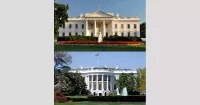
The White House located at Pennsylvania Avenue NW in Washington...
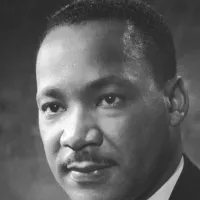
Martin Luther King Jr was a pivotal leader in the...

The stock market serves as a platform where buyers and...
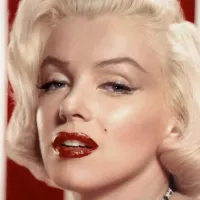
Marilyn Monroe was an iconic American actress and model who...
The Union of Soviet Socialist Republics USSR existed from to...
Trending
1 month ago Typhoon Kalmaegi Devastates Philippines: Hundreds Dead, Another Storm Threatens Hope

1 month ago Dubai Overtakes New York as Top Destination for the World's Wealthy Elite.
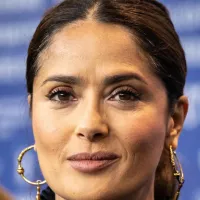
24 days ago Salma Hayek stuns in velvet dresses showcasing Old Hollywood glamour and Kahlua partnership.

29 days ago Tom Hardy's Spy Thriller overtaken by 'Now You See Me' at Box Office.
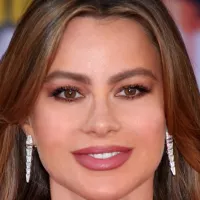
1 month ago Sofía Vergara: Comfort Style, 'Dune' Ambition, and Skechers Brand Ambassador
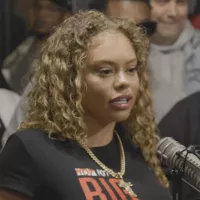
3 months ago Latto Confirms Relationship with 21 Savage, Publicly Calls Him Her 'Husband'
Popular

Candace Owens is an American conservative political commentator and author...
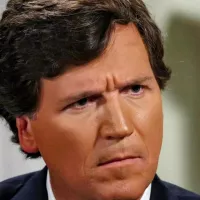
Tucker Carlson is an American conservative political commentator known for...

XXXTentacion born Jahseh Dwayne Ricardo Onfroy was a controversial yet...

Ben Shapiro is a prominent American conservative political commentator media...

William Franklin Graham III commonly known as Franklin Graham is...

Bill Gates an American businessman and philanthropist revolutionized personal computing...

